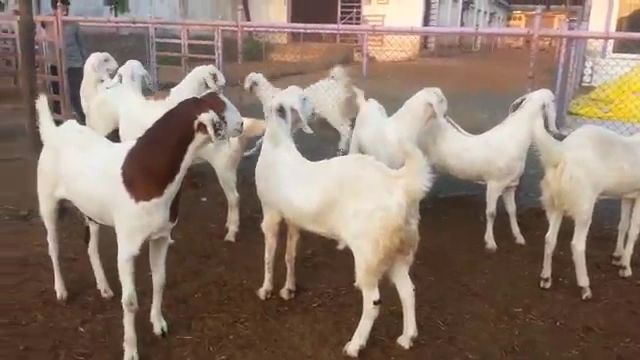[This blog is based upon findings from research into small business related COVID-19 assistance. For the full report presenting the findings based upon that research, visit this link.]
The economic impact of Covid-19 has been devastating for most American businesses. It has been especially so for small businesses.
This is an existential problem because small businesses are the heart and soul of the American economy. If many of them disappear due to the coronavirus, it will greatly diminish this nation’s strength and spirit.
That’s not just our opinion. It is the opinion of more than 100 CEO’S of large companies, major trade associations and small businesses who sent a letter to congressional leaders advocating a major intervention on behalf of small businesses.
Small Business by the Numbers
The 2020 Small Business Profile prepared by Small Business Administration Office of Advocacy reports that in 2017 there were 31.7 million small businesses in the U.S. Nearly 6 million of those businesses had employees. 25.7 million were nonemployer firms.
For the employer firms, over 5.3 million had 1–19 employees and nearly 640 thousand had 20–499 employees. These businesses employed nearly 60.6 million people — 47.1% of the private sector workforce — and generated 1.6 million net new jobs. Firms with less than 20 employees added 1.1 million of those jobs.
Those numbers attest to the central importance of small business for this country and its economic future. The coronavirus pandemic is putting that future at risk.
The extent and nature of that risk was documented in various small business studies and reports in the initial months of the pandemic which showed:
- 43 percent of small businesses across a range of sectors closed temporarily
- The number of active business owners declined by 3.3 million between February to April
- Nearly 7.5 million small businesses may be at risk of closing permanently
The bottom line is that the impact of Covid-19 on small businesses has been and will be staggering. Millions of active small businesses have closed temporarily.
Now, as the pandemic is in the second stage of its initial surge and blanketing the entire United States, it appears likely that eventually millions could close permanently as a consequence of the virus. Who are they?
Small Businesses Most at Risk of Closing
The small businesses most at risk of closing are:
- Smaller small businesses — with fewer than 20 employees which constitute the bulk of small business employer firms
- Nonemployer businesses that have no paid employees except the owner. About one-third of these businesses are owned by minorities and 40 percent are owned by females.
- Businesses in the retail, arts and entertainment, personal services, food services and hospitality sectors
- Businesses with employees owned by African Americans, immigrants, Latinx, Asians, and females
- Mom and pop establishments with fewer than 5 employees in older historic urban neighborhoods and in cities and towns with fewer than 10,000 residents across the country
Federal Government Covid-19 Small Business Assistance: Round One
The Paycheck Protection Program (PPP) implemented by the Small Business Administration (SBA) was the federal government’s primary response to assist small businesses in coping with the economic crisis created by the coronavirus pandemic.
Less well publicized, until there was an SBA OIG report and flurry of reporting on misuse of some of its funds, was the SBA’s Economic Injury Disaster Loan (EIDL) for businesses impacted by Covid-19. These are low interest loans of up to $150,000 at an interest rate of 3.75% for up to 30 years. By May 18, the SBA had made 252,340 of these loans at an average of close to $100,000 each.
The PPP had two tranches of funding. It went into effect on April 3 with an initial tranche of $349 billon for low interest loans. This initial funding was almost completely burned through in only two weeks, with many large loans made to bigger small business and smaller business not faring nearly as well.
Congress approved a second tranche of $310 billion on April 26. These funds were distributed more equitably and with more flexible terms.
Through July 6, when the SBA released information on the PPP, nearly 5,500 lenders had distributed 4.9 million loans at an average of $106,000 totaling $521 billion — close to 80% of the available PPP funds.
A Main Street America Survey found that 39 percent of businesses with fewer than six employees who had applied for loans received them compared to 64 percent with six employees or more. And a McKinsey & Company’s Small Business Survey disclosed that “…the smallest businesses, particularly those with annual revenues less than $250,000 were significantly less likely to apply to the US Small Business Administration Paycheck Program…”.
Federal Government Covid-19 Small Business Assistance: Round Two
While not perfect, the PPP — especially as modified through the Flexibility Act — created some breathing room for millions of small businesses. And when Congress finally agrees on what should be in the next stimulus package, it will be getting additional assistance.
At this point it is difficult to determine exactly when that will be. There are some significant differences between the House and the Senate about what should be in the next stimulus package to respond to the impact of the coronavirus.
The House, under the control of a Democratic majority, passed a $3+ trillion stimulus package in late May. And after resisting doing anything, the Senate, under Republican majority, reluctantly and after much internal squabbling put together a $1 trillion package in the week of July 27.
Democratic leadership met with White House Chief of Staff Mark Meadows and Treasury Secretary Steve Mnuchin on July 31, but were deadlocked. Talks continue but progress has been slow and as of this posting, on August 4, no deal has been cut. The good news for small businesses is that from the outset both Republicans and Democrats agreed that there should be continued support to small businesses through the PPP.
The Republicans placed an emphasis on businesses that were struggling to survive, with a focus on businesses with 300 employees or less and businesses in low-income census tracts and seasonal businesses. The Democrats placed an emphasis on business owners of color and females who were under-represented in the first round of PPP funding, and include a carve-out for small businesses with 10 employees or less.
Regardless of the content of the final bill, the smaller small businesses will still have unmet needs. Many, and possibly the vast majority of them, will be in survival mode.
Microbusinesses and Nonemployer Businesses Assistance Recommendation
As we have discussed, Covid-19 has wrought significant negative changes on small business in less than one-half year. In general, microbusinesses (firms with 1–9 employees) and nonemployer businesses (firms with no paid employees) have suffered the most from these negative changes.
Given this, and our understanding of the covid-19 assistance the federal government has provided to small businesses to date through PPP and EIDL, and the future plans for assistance, we recommend that Congress complement and support that assistance by authorizing and providing funds to the SBA to implement a direct loan program targeted at microbusinesses and non-employer businesses.
This should be a direct loan program and not a guaranteed federal loan program such as that recommended in the CEO letter for assistance to small business cited near the opening of this blog. A federally guaranteed loan would most likely not reach the smallest small businesses and that is why they will need direct loans.
The program should place a priority focus on the businesses within these two categories that have been impacted most greatly by Covid-19:
- Businesses owned by females, African Americans, Latinx, immigrants, and Asians.
- Businesses in the retail, arts and entertainment, personal services, food services and hospitality sectors
- Main street “mom and pop establishments” in rural and disadvantaged urban neighborhoods
These direct loans should be long-term, low interest and modeled after the EIDL. The loans should require no payment for the first six months after they are given.
The direct loan program should provide an initial grant that can be used for the operational support and sustenance of an ongoing business, for a business to re-start an enterprise that was caused to close by the pandemic, or to enable an entrepreneur to start-up a new venture to replace a business they have lost. It should also provide technical assistance to business owners and entrepreneurs to help them revise their business models and develop business plans for taking their businesses forward.
There are numerous reasons for developing a targeted micro- and nonemployer businesses direct loan program. They include the following:
- These businesses are an essential part of the small business fabric. In 2016, there were 3.8 million microbusiness employers–nearly 75 percent of all private sector employers. In 2017, there were 25.7 million non-employer firms, constituting over 80 percent of small businesses.
- These businesses have the most difficulty securing traditional loans from banks and other lenders. One study showed the “Access to capital continues to be a driving factor that disproportionately affects minority-owned businesses, especially those owned by Blacks and Hispanics.”
- Nonemployer businesses tend to provide their own start-up and operating capital.
- Although there is no definitive or conclusive data at this time, initial reports suggest small, small businesses have been the least likely to receive Covid-19 PPP or EIDL assistance.
- These businesses are on the corner block, in the neighborhood home, and spread throughout small, towns and cities across this country.
- These businesses are truly main street businesses and would not qualify for the inappropriately named Federal Reserve Main Street Lending Program, which is open to medium and small businesses which have up to 15,000 employers or fewer and annual revenue in 2019 of less than 5 billion.
- For these businesses, the pandemic economic disaster has been the equivalent of a natural disaster. That is why a program modeled after the EIDL would be appropriate. Data on the nature of the SBA’s Covid-19 EIDL loan recipients is currently not available. It is highly unlikely, however, given the loan size of approximately $100,000, that many of the recipients of these loans were micro- or non-employer businesses.
This targeted direct loan program will ensure there are millions of small businesses in existence across this country in the years to come that would not be there otherwise.
Those businesses will be revitalized. In return, they will help revitalize this nation.
Small, small businesses have made that contribution in the past. Properly supported, they will make that contribution in the future.
They will pay back the investment in them in dollars and cents and by keeping America whole and the American dream alive.






